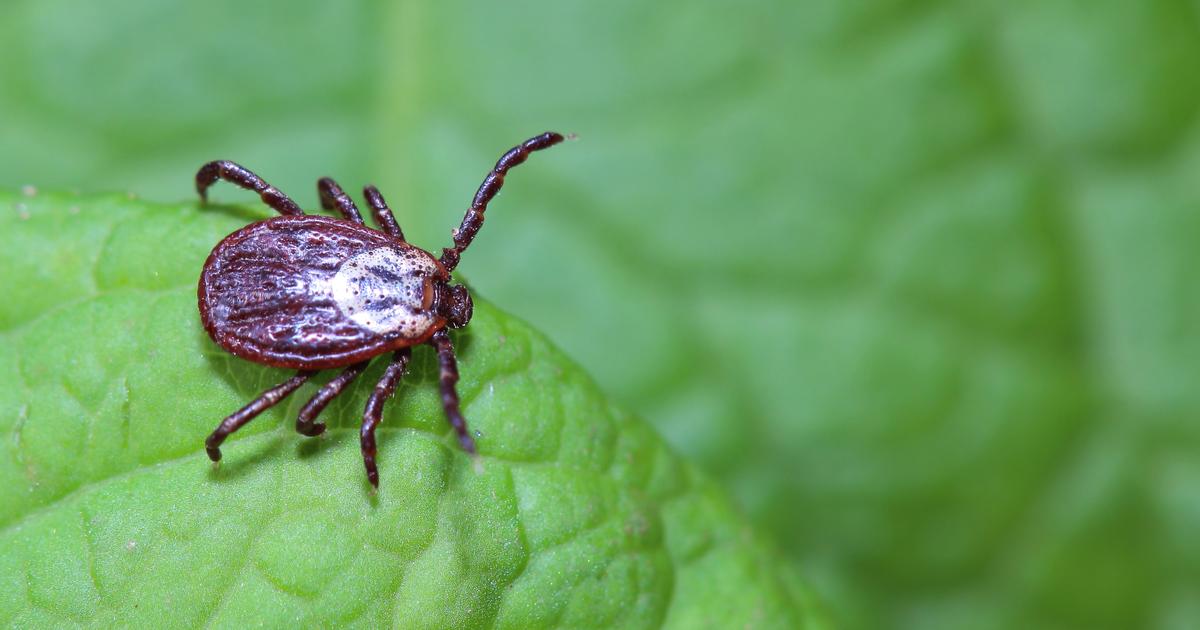A tick is a dark brown parasitic mite, which
feeds exclusively on blood
by biting its prey, both animals and humans, but without causing pain.
It measures between 3 and 11 millimeters and its life expectancy is estimated between three and four years.
To discover
True or false: fight misconceptions about the garden
According to the National Research Institute for Agriculture, Food and the Environment (Inrae), more than
900
different species of ticks are recorded in the world, including more than thirty in France.
They are the
first vector of disease in animals and the second for humans
, after the mosquito.
According to the organization, the period during which they are most present in France extends between the beginning of spring and the end of autumn, depending on the region.
In 2020, up to 47% of stings took place in gardens between March and April, during the first confinement.
Read alsoTicks: beware danger
Where are the ticks in the garden?
Ticks like to take up residence on tall grass, bushes, hedges or in heaps of dead leaves and wood grouped together, but also in bocage,
damp
and
shady areas.
What are the main risks associated with ticks?
They are multiple because they are carriers of pathogens (bacteria, viruses and protozoa) which can lead to several infections and serious illnesses (if they are infected with the bacterium
Borrelia burgdorferi
, Lyme disease, which affects around 50,000 in the world each year). 'Hexagon, according to Public Health France, tick-borne encephalitis ...), even fatal.
Read alsoLyme disease: five things to do in the event of a tick bite
The
symptoms are varied
: from fatigue to migraine, pain in certain limbs, blurred vision or facial paralysis.
It is important to consult your doctor quickly.
Recommendations
In the event of a walk in the forest or in the woods, favor long and light-coloured clothing, wear high shoes, the bottom of the trousers in the socks, the blouse in the trousers) and a hat to cover the entire body.
It is advisable to walk in the middle of marked paths and paths to be less in contact with tall grass.
On your return, examine yourself and your animals as thoroughly, from the scalp to the folds of your skin to see that no
sting in the form of a small black dot
surrounded by a red halo
has appeared.
Repeat the observation the next day.
How to remove a tick?
By taking it as close as possible
with a tick puller
, a special clamp available in pharmacies.
Gently slide the hook under the tick without crushing it, as close as possible to the skin, making a rotating movement to take all the fragments of the insect then disinfect with an antiseptic.
Then wash your hands thoroughly.
For prevention and precaution, monitor the bitten area for a month.
Read the filePests, insects: all our advice to protect your garden
How do I eradicate tick nests from my garden?
Whether eggs, larvae or adulthood, ticks die when it is too cold or too dry.
Therefore, in order not to favor a land that would suit them, it is recommended to cut the hedges, prune the trees so that there is less shade in your garden, mow the lawn regularly by letting it dry between two waterings, clear and trim or remove weeds so that they are not too tall and become an environment conducive to the proliferation of these pests and that no square meter of wasteland takes place, then compost the cut grass or throw it away just like wet wood picked up in a bag and then in your garbage can.
To make the soil less accessible, you can place dry mulch or gravel in strategic places that you and those around you frequent (garden furniture, swing, play area, terrace or arranged as a border of land to form a natural barrier. ).
Read alsoThe garden emerges from the shadows
Ticks are not fond of certain odors such as those of certain plants such as lavender, lemon balm, lemongrass geranium, plant manure (nettle for example) or even aromatic herbs (mint, rosemary, bay leaf, lemon thyme , basil) which thus act as
natural repellents
and will allow you at the same time to give flavor to your dishes.
On the other hand,
avoid the broom which attracts them!
If your exterior is large enough and you like animals and want fresh eggs, you can use the hen to eat them in its path.
A map of France ticks
The map of France showing the regions where ticks are found.
Inrae
As part of the national plan to
combat Lyme disease
and diseases transmitted by ticks, researchers from Inrae, VetAgro Sup, the National Food Safety Agency (Anses), the company Boehringer Ingelheim and the Center for International Cooperation in Agronomic Research for Development (CIRAD) have mapped the areas favorable to the presence and activity of these parasitic mites in France.
Read alsoWhy we must be careful with Lyme disease
The result on the map above is based on data collected in seven observatories according to various climates, meteorological (temperature, humidity) and environmental (altitude, land cover, etc.) data and the presence of foster hosts such as deer.
The preventive map shows colors such as green (less exposed areas) or red (most exposed areas).
The objective is to "combine the map and the statistical model to produce weather maps to better predict the risk associated with tick bites", says Inrae in a press release published since June.

